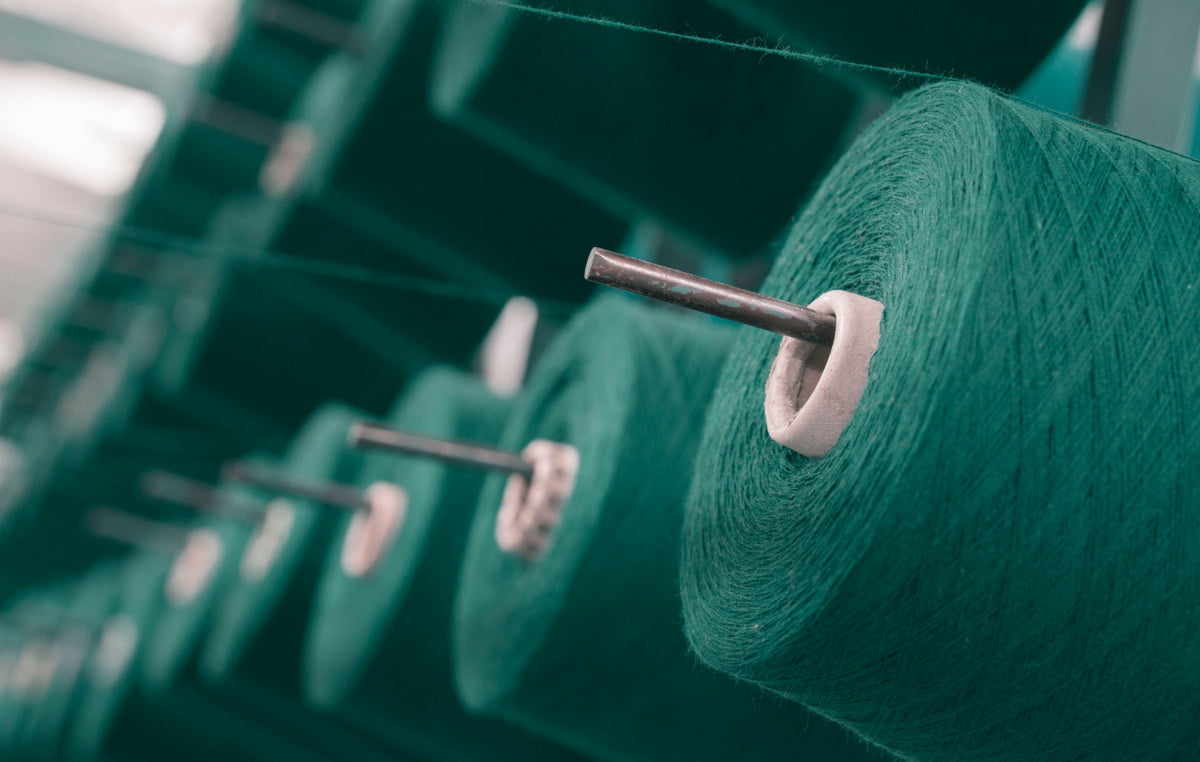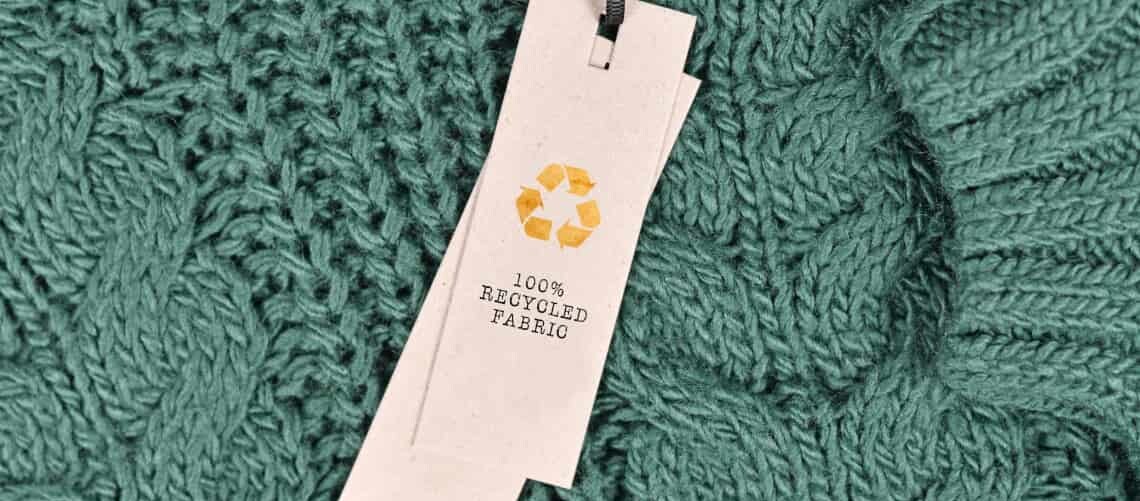Table of Content
- The Environmental Impact of the Traditional Linear Textile Industry
- The Circular Business Model: A Sustainable Alternative to Linear Production
- The Multiple Advantages of a Circular Textile Industry
- Pro Tip
- Overcoming Hurdles: Making Textile Recycling a Reality
- Textile Recycling Innovations: A Sustainable Fashion Future
- Conclusion
1. The Environmental Impact of the Traditional Linear Textile Industry
The conventional way of textile production and consumption followed a linear process: "take, make, throw away". Raw materials were taken from nature, turned into clothes, used, and then thrown away as waste.
This method has caused several environmental problems:
- Waste Build-Up: Each year, the textile industry creates about 92 million tons of waste, most of which ends up in landfills or is burned.
- Pollution: Making textiles uses harmful chemicals and dyes that often pollute water. It produces a lot of carbon emissions because of energy-heavy manufacturing processes.
- Using Up Resources: Making textiles uses up natural resources like cotton, water, and petroleum-based materials. For example, growing cotton requires large amounts of water, and making synthetic fibers like polyester relies on petroleum, which is limited.
2. The Circular Business Model: A Sustainable Alternative to Linear Production
A circular business model offers a way to solve the problems caused by the traditional system of producing, using, and discarding goods.
It focuses on keeping materials in use for as long as possible.
For example, in the textile industry the focus shifts to:
- Durability: Making clothes that last longer by using strong materials and good construction.
- Reuse: Giving clothes a second life through resale, donation, or repurposing.
- Recycling: Turning old clothes into new fabrics, reducing the need for new resources and supporting textile recycling.
This new approach is changing the fashion industry. Brands are experimenting with sustainable manufacturing practices, using recycled fibers and exploring business models like clothing rental and take-back programs.
The circular production concept is also impacting the way B2Bs manage their company and workflow. The aim is now to prioritize sustainable materials and ethical production. This requires fostering partnerships across the supply chain to support recycling and reuse.
As a result, innovation in product design and manufacturing is encouraged, with a focus on durability, repairability and recyclability. A major emphasis is placed on the traceability and certification of materials.
This shift towards circularity is not only driving environmental benefits but also creating new B2B markets for sustainable technologies, materials, and services.

3. The Multiple Advantages of a Circular Textile Industry
Switching to a circular business model has many benefits:
- Environmental Impact: Using recycled fabric helps reduce waste and lowers carbon emissions by cutting down on the energy needed to make new materials. It also saves water and reduces harmful chemicals used in production.
- Resource Conservation: Recycling textiles and using eco-friendly materials helps save natural resources like water, cotton, and petroleum, making production more efficient and protecting these resources.
- Economic Opportunities: The circular economy creates new business ideas and jobs. Companies that focus on textile recycling, eco-friendly design, and sustainable practices can meet the growing demand for green products. Ideas like clothing rental, repair services, and take-back programs encourage long-lasting clothes.
- Job Creation: As the demand for sustainable textiles is increasing, there’s a need for skilled workers in areas like recycling, design, and garment repair, creating new jobs in the green economy.
4. Pro Tip
Want to know how to maximize the value of your products, even at their end-of-life? Design for Disassembly is a smart strategy for businesses who want to minimize their environmental impact while making the most of their resources.
It incorporates easily separable components and clear material labeling, which makes textile recycling more efficient by reducing waste, opening upcycling potential, and saving costs.
5. Overcoming Hurdles: Making Textile Recycling a Reality
Textile recycling is an important way to make fashion better for the environment, but there are some challenges.
One is that many clothes are made from different materials, like cotton and polyester, which are hard to separate. This makes recycling harder and often gives lower-quality materials.
A very common method to separate fabrics is chemical recycling. With this method, plastics and synthetic fibers are broken down to their original building blocks. However, report findings show that this recycling process produces large amounts of toxic waste and harms the environment – which is undermining its initial purpose.
In this case, biological recycling might be a better option. This technique uses enzymes to break down fabrics. It’s a more eco-friendly way to recycle textiles, as it uses less energy and fewer harsh chemicals. And it still produces high-quality recycled fibers.
Another issue is that there aren't enough places to collect and sort old clothes. Without good systems, it's hard to recycle enough.
This is where a closer collaboration between businesses across the textile industry is needed. Together, B2Bs can achieve great advancements in textile recycling logistics and sorting efficiency.
This includes initiatives like providing businesses with on-site collection and sorting solutions, and developing a digital platform to connect them with recycling facilities.
6. Textile Recycling Innovations: A Sustainable Fashion Future
The future of the textile industry is all about recycling, and new technologies are making this possible. These innovations help tackle the problem of recycling clothes made from different materials and allow high-quality fabrics to be made for new clothes.
Here are some of the new technologies:
- AI-Powered Sorting Systems: These systems use image recognition and machine learning algorithms to identify and sort different types of fabrics and textile waste. The perks are convincing: accelerated sorting process, improved accuracy and reduced labor costs.
- Hydrothermal Recycling: This process uses pressurized water and heat to break down fabrics like polyester into their original building blocks. As a result, businesses are creating high-quality recycled polyester. This reduces the need for new resources.
- 3D Fiber Separation: This method uses air to separate fibers in a fabric. It’s like a high-tech sorting system that can quickly tell the difference between materials like cotton and polyester. This is a game-changer for businesses dealing with lots of fabric waste, as it helps them sort things quickly and get better quality recycled materials.
.png)
7. Conclusion
The textile industry is changing because there is a need for more sustainable practices.
A circular business model helps reduce waste, use resources better, and lower the industry’s impact on the environment. Textile recycling is an important part of this change and new technology makes it possible to turn old materials into high quality fabrics.
One of the exciting things for the future is bio-based textiles. These are fabrics made from plants, like bamboo or corn.
Bio-based textiles are better for the planet as they use less water and energy to produce. Some bio-based textiles made out of seaweed or mushroom have unique properties that benefit the wearer, like being antibacterial or skin-friendly. This is just one of the many ways the fashion industry is moving towards a greener future!
Find Sustainable Textile Suppliers for Your Project
Magma Têxtil: Is a sustainable, high-quality textile manufacturer based in Portugal that offers a wide range of fabrics and services to luxury brands worldwide with a focus on short delivery times and eco-friendly practices.
Recycling Fibers:Transforms waste materials into usable fibers for various industrial applications, promoting sustainability and reducing environmental impact.
La Verian: Offers a wide variety of high-quality, handcrafted Italian fabrics, including sustainable options like linen and silk.
GEBETEX Tri Normandie: Is a Franco-Dutch company specializing in sorting and selling secondhand textiles, household linen, and shoes for reuse and recycling, promoting eco-friendly practices in the textile industry.
Neaustima UAB: Is a Lithuanian manufacturer of nonwoven fabrics using sustainable materials like recycled fibers, hemp, and flax, and also recycles textile waste into new fibers for their products.
VIELTA SA: Is a sustainable manufacturer of high-quality elastic and non-elastic narrow fabrics for various industries, utilizing recycled materials and eco-conscious practices.
Tuğhan Tekstil: A Turkish clothing manufacturer specializing in supporting emerging brands with sustainable fabric choices and responsible production processes.

